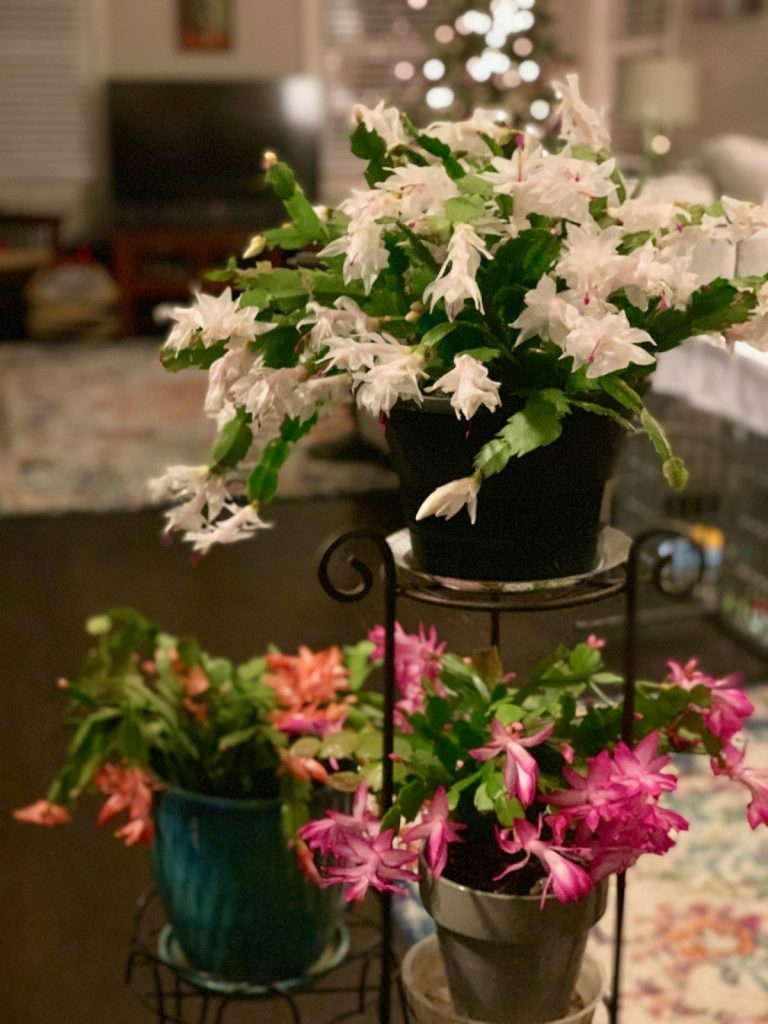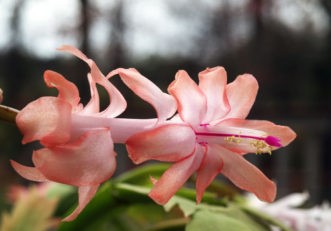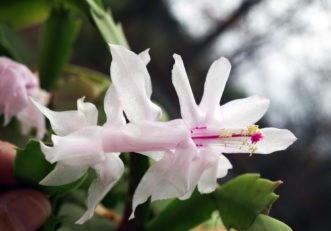Christmas or Thanksgiving Cactus?
go.ncsu.edu/readext?1044174
en Español / em Português
El inglés es el idioma de control de esta página. En la medida en que haya algún conflicto entre la traducción al inglés y la traducción, el inglés prevalece.
Al hacer clic en el enlace de traducción se activa un servicio de traducción gratuito para convertir la página al español. Al igual que con cualquier traducción por Internet, la conversión no es sensible al contexto y puede que no traduzca el texto en su significado original. NC State Extension no garantiza la exactitud del texto traducido. Por favor, tenga en cuenta que algunas aplicaciones y/o servicios pueden no funcionar como se espera cuando se traducen.
Português
Inglês é o idioma de controle desta página. Na medida que haja algum conflito entre o texto original em Inglês e a tradução, o Inglês prevalece.
Ao clicar no link de tradução, um serviço gratuito de tradução será ativado para converter a página para o Português. Como em qualquer tradução pela internet, a conversão não é sensivel ao contexto e pode não ocorrer a tradução para o significado orginal. O serviço de Extensão da Carolina do Norte (NC State Extension) não garante a exatidão do texto traduzido. Por favor, observe que algumas funções ou serviços podem não funcionar como esperado após a tradução.
English
English is the controlling language of this page. To the extent there is any conflict between the English text and the translation, English controls.
Clicking on the translation link activates a free translation service to convert the page to Spanish. As with any Internet translation, the conversion is not context-sensitive and may not translate the text to its original meaning. NC State Extension does not guarantee the accuracy of the translated text. Please note that some applications and/or services may not function as expected when translated.
Collapse ▲Originally written by Rachel Dutton, University of Georgia Extension

UGA Cooperative Extension experts say that the secret to Christmas cacti producing beautiful blooms lies in how much light the plant receives. Place these plants in a room with only natural light exposure near a window, ensuring that artificial lights stay off at night. Another option is to keep them outdoors as long as possible in the fall, bringing them indoors just before the threat of freezing temperatures.
Do you have a Christmas cactus that seems to bloom early each year, and you wonder what you’ve done wrong? It could be that Thanksgiving is in fact the right time for your plant to flower. The sharp-toothed edges of this plant suggest it is a Thanksgiving cactus, a species of its own.
A Christmas cactus is one of three popular holiday cacti: Easter, Thanksgiving, and Christmas. Thanksgiving cacti typically start in late fall and Christmas cacti, around a month later. An Easter cactus often starts producing flower buds after the height of winter.
Thanksgiving cacti are often sold as “Christmas cacti,” and these two holiday plants look very similar. In fact, the Thanksgiving species was a parent of the hybrid Christmas plant. Commercial growers can treat both types to bloom at a prescribed time for holiday sales. Both fall in the genus Schlumbergera, have the same color scheme and require the same care. There are two main differences between a Christmas and Thanksgiving cactus: the flowering season and the segments of the leaves. True Christmas cacti (S. xbuckleyi) have smooth, round leaf edges while Thanksgiving cacti (S. truncata) have jagged leaf edges.

Thanksgiving cactus with peach-colored blossom. Thanksgiving cactus with pale pink blossom.
James Blake, ©2011 HGIC, Clemson Extension
If your plant possesses the telltale rounded leaves of the Christmas cactus yet insists on blooming earlier in the fall, it’s likely due to its growing conditions. Both Thanksgiving and Christmas cacti need cool temperatures to spur flower buds. Night temperatures between 55 and 60 degrees (F) are ideal. Flowering is also best with longer periods of total darkness, around 13 to 16 hours each night. Flowering should follow about eight weeks of this treatment. The earlier the onset of cool conditions and long nights, the sooner the plant will flower. Try keeping your plant in a warm, well-lit spot, such as a room you use throughout the evening, for longer into the fall if you’d like it to bloom later in the season.
Thanksgiving cactus (Schlumbergera truncata) and Christmas cactus (Schlumbergera x xbuckleyi) are popular, fall- and winter-flowering houseplants native to Brazil, and are available in a wide variety of colors including red, rose, purple, lavender, peach, orange, cream, and white. These Schlumbergera species grow as epiphytes among tree branches in shady rainforests, and their pendulous stems make them a great choice for hanging baskets.
When grown under normal night length conditions, Thanksgiving cacti normally flower near Thanksgiving approximately a month before Christmas cacti bloom. Another member of the group sold as holiday cacti is the Easter cactus (Hatiora gaertneri; synonym Rhipsalidopsis gaertneri), which flowers primarily in the spring and sporadically throughout the year with pink or red flowers. Because of its bloom time, the Thanksgiving cactus is most predominately encountered for sale during the winter holiday season. Flowering can last up 7 to 8 weeks if the plants are kept at 68 ºF.
To distinguish between the Thanksgiving and Christmas cacti, look at the shape of the flattened stem segments, which are botanically called phylloclades. On the Thanksgiving cactus, these stem segments each have 2 to 4 saw-toothed serrations or projections along the margins. The stem margins on the Christmas cactus are more rounded. Note that there are no true leaves on either of these holiday cacti, so photosynthesis occurs within the green phylloclade.
A second method to distinguish between these two Schlumbergera species is based on the color of the pollen-bearing anthers. The anthers of the Thanksgiving cactus are yellow, whereas the anthers on the Christmas cactus are purplish brown.
Light & Temperature: The holiday cacti grow best in light shade. Full sunlight is beneficial during fall and winter, but bright sun during the summer months can make plants look pale and yellow. Ideal spring and summer growth occurs at temperatures between 70 to 80 °F during its growing season from April to September. During the fall, the Thanksgiving and Christmas cacti depend upon shorter day lengths (8 to 10 hours) and cooler temperatures to set their flower buds. Do not let temperatures rise above 90 °F once the flower buds are set in the fall. Continuous warm temperatures can cause flower buds to drop. Do not leave these cacti outside if temperatures will drop below 50 ºF.
The secret of good flower bud production during the fall involves temperature regulation and photoperiod (length of day and night) control. To initiate flower buds the plants, need:
- Bright light.
- Long nights. Fourteen hours or more of continuous darkness each day is required before flower bud set will occur. Long nights should be started about the middle of September and continued for at least 6 continuous weeks for complete bud set. Note that as little as 2 hours of interrupted lighting will inhibit flower bud set. Buds normally will be visible in 3 to 4 weeks. The photoperiod has no effect on flowering once the buds are set.
- Fall growing temperatures should be kept between 60 and 68 °F, but as close to 68 ºF as possible for maximum flower production. Plants grown with night temperatures between 50 and 59 ºF will set flower buds regardless of day length, but growth will be slower and bud drop may occur at 50 ºF.
- Pinching back the stems in early June to promote branching and more terminals for more flowers.
- Pinching (also called leveling) at the end of September to remove any terminal phylloclade that are less than 1 cm (0.4 inch) long and to make all stems approximately the same length. These short and immature stem segments will not initiate flower buds until they mature. After a short phylloclade is removed, a flower bud forms on the previous, more mature stem segment.
Watering & Fertilizer: Water the growing medium when it is dry to the touch. The holiday cacti are tolerant of dry, slightly under-watered conditions during the spring and summer. Do not let the soil become waterlogged, especially during the dark days of winter, but do not let the soil completely dry out either. However, following bud set in the fall, the growing medium must be kept evenly moist to prevent flower bud drop. Never let water stand in the saucer beneath the pot.
Fertilize plants monthly from the time new growth starts in late winter or early spring, and throughout the summer using a one-half strength soluble fertilizer, such as a 20-10-20 or 20-20-20 with trace elements. Holiday cacti have a higher requirement for magnesium than many plants. Fertilize monthly during the growing season with Epsom salts (magnesium sulfate) mixed at 1 teaspoon per gallon of water, but do not apply the same week as the regular fertilizer. Stop fertilization during the late summer for greater flower bud production in the fall.
Growing Media: The holiday cacti flower best when kept somewhat pot-bound. Repotting is necessary only about once every three years and is best done in the spring. The potting medium must be well-drained with good aeration, as these epiphytic cacti do not grow well in heavy, wet potting mixes. A good mix may contain 60-80% potting soil with 40-20% perlite. Choose a good brand of potting soil that is pH balanced.
Propagation: Holiday cacti are easy to propagate by cuttings, which are taken in May or June. Pinch off sections of stems with 3 to 5 phylloclade (stem segments) on each. Allow the cut ends of the sections to callus by placing them outdoors in the shade for a day or two. Choose a well-drained potting soil and new or disinfected containers for rooting. Place three cuttings at approximately one inch deep into the potting soil of a 4-inch container or use 5 cuttings in a 6-inch container. Water the soil well and cover the plants and rooting container with a clear plastic bag secured with a rubber band around the container. The plastic bag will act as a miniature greenhouse to keep the relative humidity at 100% to enhance rooting. Place the container in bright, indirect light until roots have formed in three to eight weeks. At this time the plastic bag can be removed, and a dilute fertilizer solution can be used at watering.





